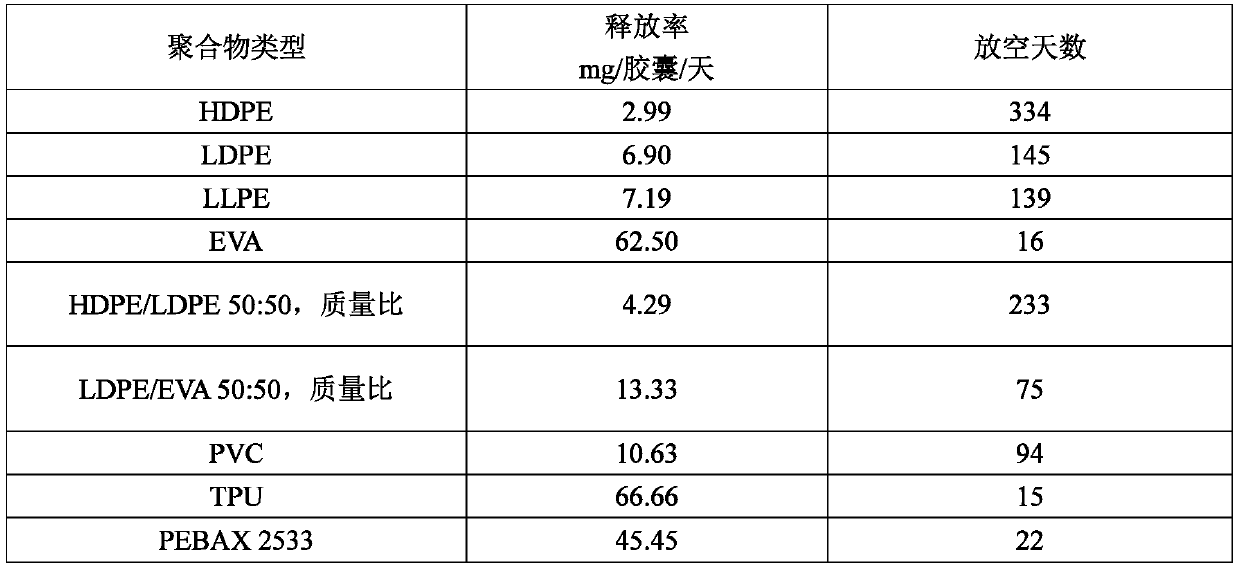Control method for phytophthora infestans and plant diseases caused by phytophthora infestans
A technology for potato late blight and potato late blight, which is applied in the directions of botanical equipment and methods, plant growth regulators, and chemicals used for biological control, etc., and can solve the problems affecting the control effect of Phytophthora solani and the short duration of validity. , to achieve the effect of reducing the frequency of medication, lowering the cost of medication, and achieving good prevention and treatment effects.
- Summary
- Abstract
- Description
- Claims
- Application Information
AI Technical Summary
Problems solved by technology
Method used
Image
Examples
Embodiment 1
[0044] The control effect of embodiment 1 allyl isothiocyanate to potato infestans
[0045]In this example, an in vitro test was carried out to determine whether allyl isothiocyanate at different concentrations could inhibit the growth of P. infestans infestans on rye agar. Allyl isothiocyanate was measured at concentrations of 0.125, 0.25, 0.50, 1.0 and 2.0ml / L, respectively. Add different concentrations of allyl isothiocyanate into flasks containing unsolidified sterile rye agar medium to obtain a predetermined concentration of allyl isothiocyanate, and then pour it into a petri dish. Another set of petri dishes was poured into the rye agar medium without allyl isothiocyanate as a control treatment. Take 8mm-diameter plaques from the edge of the cultured infestans, inoculate the infestation into the center of the prepared petri dish, and inoculate 5 petri dishes for each treatment. All culture dishes were placed at 25±1°C for cultivation. When the bacteria in the control ...
Embodiment 2
[0052] Embodiment 2 controlled-release capsules and preparation method thereof
[0053] This example tests a number of polymer capsules with the goal of identifying polymers that may be suitable as controlled release particle matrices or carrier coatings. Capsules consist of a polymeric tube containing the appropriate amount of fumigant mixture, sealed and cut to the appropriate length. Polymers tested included HDPE, LDPE, LLDPE, ethylene vinyl acetate and blends of these, as well as polyvinyl chloride (PVC), thermoplastic polyurethane and polyether / amide block copolymers (PEBAX ). A tube with an inner diameter of 4 mm, a wall thickness of 0.5 mm, and a length of 100 mm was filled into 1 mL of AITC and sealed with a hot iron. Store the sealed capsules at room temperature (21-25°C), and weigh them with an analytical balance every other week for three months or until the contents of the capsules are completely released. The results are shown in Table 3.
[0054] The target f...
Embodiment 3
[0058] Embodiment 3 sustained-release granules and preparation method thereof
[0059] The first consideration should be the ability of the polymer to accommodate allyl isothiocyanate. The content of allyl isothiocyanate that can be accommodated by a granular matrix composed entirely of EVA, TPU and PEBAX was determined experimentally. Weigh 100 grains of EVA, TPU and PEBAX to an accuracy of 0.1 mg, soak them in allyl isothiocyanate overnight, and roll them on paper to remove surface residues. Then reweigh to determine the uptake of AITC.
[0060] The results showed that the polymer had limited adsorption capacity for AITC. Subsequently, two mineral source carriers (vermiculite and montmorillonite clay particles, both with a particle size of 2-3 mm) and two plant source carriers (wood flour and bamboo, with a particle size of 2-3 mm) were tested for AITC. Absorptive capacity. These carriers were found to absorb higher concentrations of AITC. The test results are shown in ...
PUM
 Login to View More
Login to View More Abstract
Description
Claims
Application Information
 Login to View More
Login to View More - R&D
- Intellectual Property
- Life Sciences
- Materials
- Tech Scout
- Unparalleled Data Quality
- Higher Quality Content
- 60% Fewer Hallucinations
Browse by: Latest US Patents, China's latest patents, Technical Efficacy Thesaurus, Application Domain, Technology Topic, Popular Technical Reports.
© 2025 PatSnap. All rights reserved.Legal|Privacy policy|Modern Slavery Act Transparency Statement|Sitemap|About US| Contact US: help@patsnap.com



